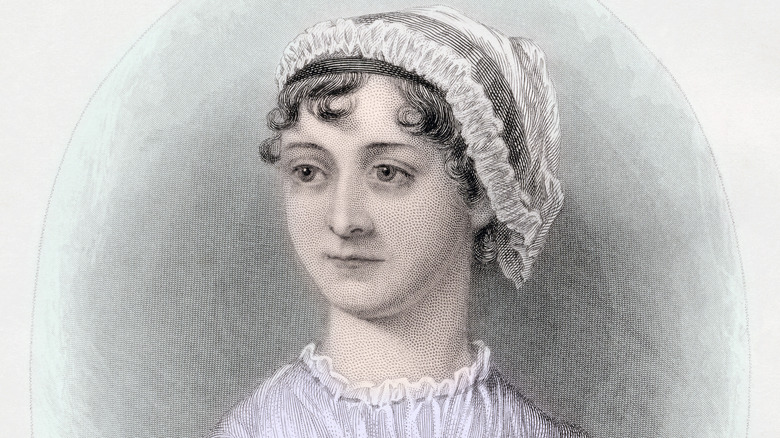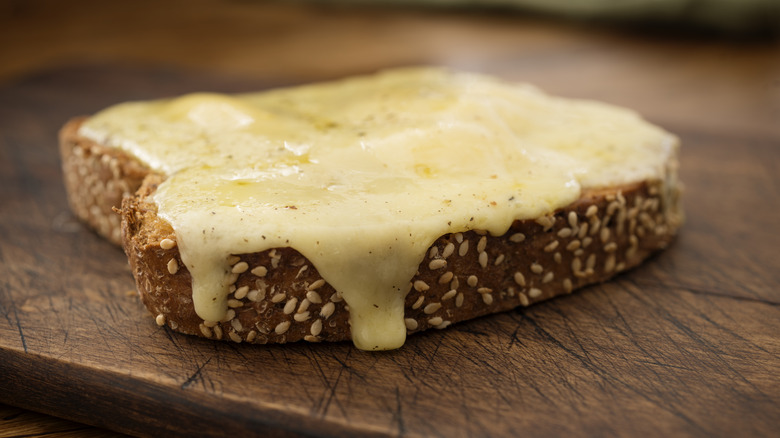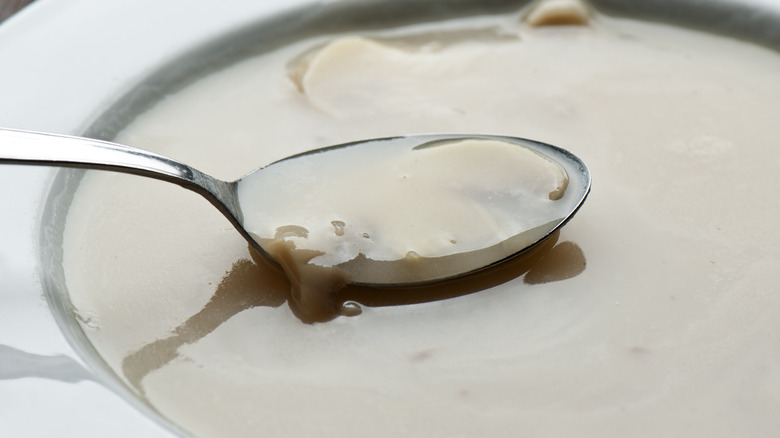The Classic Sandwich Jane Austen Absolutely Adored
Jane Austen remains among the most influential authors of all time, creating masterpieces such as "Sense and Sensibility" and inspiring everything from zombified retellings of her work in "Pride and Prejudice and Zombies" to the racy, joyfully anachronistic "Bridgerton." It's natural to want to know more about an author of her skill and impact, and there's hardly a better way to do that than to enjoy some of her favorite foods.
Toasted cheese was one of her favorites, which we know thanks to the record-keeping of a close friend. If that were all we knew about her favorite, we'd be in trouble since "toasted cheese" can describe no less than three meals, all of which use different cooking styles. Luckily, the handwritten "household book" of Austen's friend, Martha Lloyd, has survived for over 200 years. Besides containing multiple recipes and remedies of the time, it lists the exact ingredients of Austen's preferred version: Grated cheese with an egg, mustard, and butter, served on toast.
Toasted cheese: a brief history
The concept of toasting cheese goes back hundreds of years before Jane Austen's time, let alone ours. One of the earliest records of the term "toasted cheese" comes from the late 1500s, with a brief mention in William Shakespeare's "Henry VI, Part 2." The Bard referred to roasting cheese over a fire with a toasting fork, collecting the melting cheese on bread as it dripped.
Two hundred years later, with considerable advances in the kitchen, including the proliferation of cast iron stoves, Austen would come to love her more complex version of toasted cheese, which is somewhat like a combination of scrambled eggs and grilled cheese. The egg is of particular note in the recipe since it draws some parallels to a croque madame, despite that meal not being popularized for another century or so.
As time advanced from Austen's era and recipes became more varied, multiple terms began being used interchangeably. Toasted cheese became cheese toastie to some, cheese on toast or cheese sandwich to others, and finally, Americans started calling it grilled cheese in the 1960s. Today, the open-faced version enjoyed by Austen is usually called toasted cheese since it's commonly finished by toasting it, while closed-face sandwiches are usually cheese toasties or grilled cheese.
Other recipes Jane Austen may have loved from Martha Lloyd's 'household book'
Because Martha Lloyd's book doesn't contain any notes openly stating which recipes may have been enjoyed most by Austen, we have to make educated guesses as to her favorites. Thankfully, plenty of her letters and written works mention meals in Lloyd's book, so the guesswork isn't too complex.
From both Austen's letters and passages of "Pride and Prejudice," not to mention France's general domination of the culinary world, we know she was a fan of French cuisine. Austen mentioned in one letter that she planned to have haricot mutton, for example, one of many French dishes found in Lloyd's book.
In "Pride and Prejudice," there is also a mention of white soup, an odd-sounding recipe found in Lloyd's book that one-time Jane Austen Society of North America board member and writer Julienne Gehrer theorizes was a favorite. Lloyd writes that it starts with a base of gravy before "egg [yolks] boiled hard and pounded very fine" is added, along with "sweet almond" and cream.


